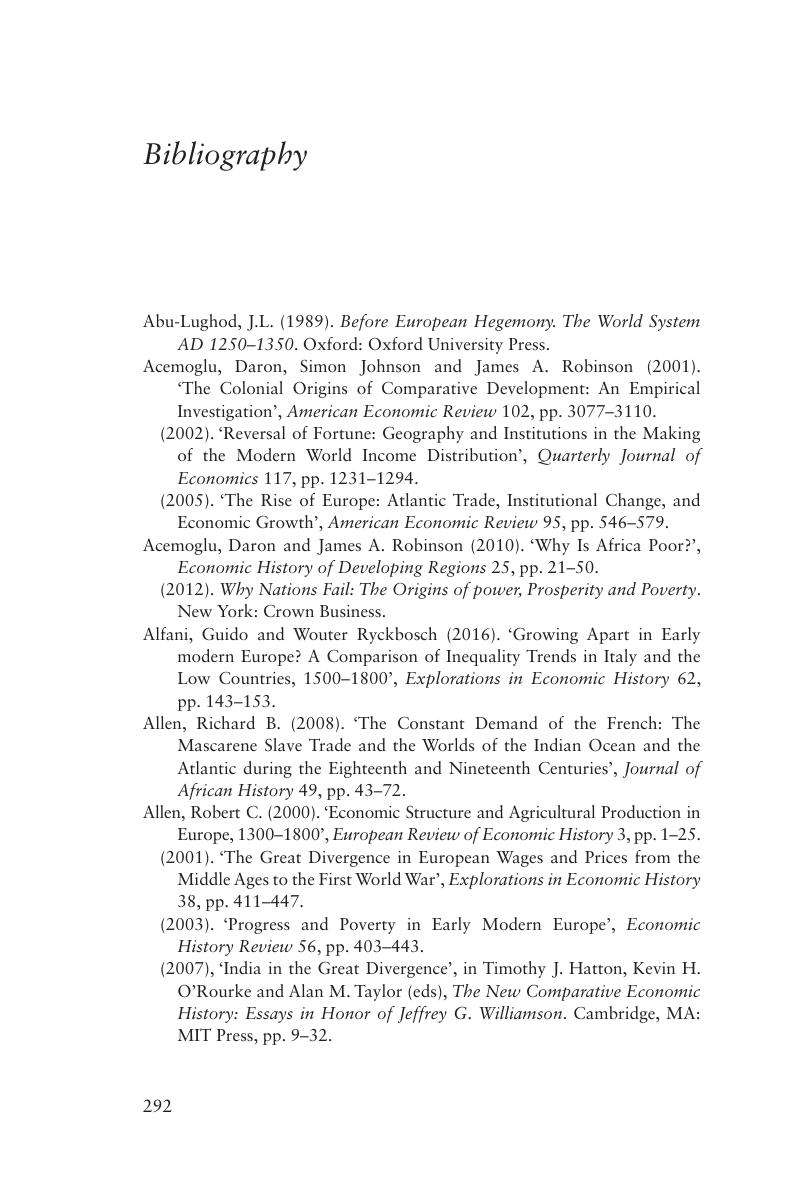Book contents
- The Origins of Globalization
- New Approaches to Economic and Social History
- The Origins of Globalization
- Copyright page
- Dedication
- Contents
- Figures
- Tables
- Maps
- Acknowledgements
- 1 Introduction
- 2 Global Connections: Ships, Commodities and People
- 3 Consequences of Conquest in Latin America
- 4 Africa and the Slave Trades
- 5 Export-Led Development in North America
- 6 Global Trade and Economic Decline in South Asia
- 7 The ‘Age of Commerce’ In Southeast Asia
- 8 East Asia and the Limits of Globalization
- 9 Europe and the Spoils of Globalization
- 10 Conclusion
- Notes
- Bibliography
- Index
- References
Bibliography
Published online by Cambridge University Press: 29 September 2018
- The Origins of Globalization
- New Approaches to Economic and Social History
- The Origins of Globalization
- Copyright page
- Dedication
- Contents
- Figures
- Tables
- Maps
- Acknowledgements
- 1 Introduction
- 2 Global Connections: Ships, Commodities and People
- 3 Consequences of Conquest in Latin America
- 4 Africa and the Slave Trades
- 5 Export-Led Development in North America
- 6 Global Trade and Economic Decline in South Asia
- 7 The ‘Age of Commerce’ In Southeast Asia
- 8 East Asia and the Limits of Globalization
- 9 Europe and the Spoils of Globalization
- 10 Conclusion
- Notes
- Bibliography
- Index
- References
Summary

- Type
- Chapter
- Information
- The Origins of GlobalizationWorld Trade in the Making of the Global Economy, 1500-1800, pp. 292 - 326Publisher: Cambridge University PressPrint publication year: 2018

